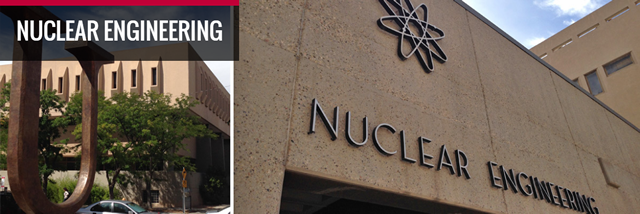
Nuclear Engineering ETDs
Publication Date
7-12-2014
Abstract
Plastic scintillator-based neutron time-of-flight (nTOF) detectors are used to measure neutron signals from fusion experiments. These nTOF signals yield a temporal pulse width that is used to determine ion temperatures after the de-convolution of the experimentally determined detector time response and shifted to account for the detector through-put delay. Typically, time response and through-put delays are measured at an accelerator or laser facility. However, an alternative method can use cosmic radiation to measure time response and through-put delay. Two plastic scintillator detectors in a coincidence system can detect an incident cosmic ray. If a third nTOF detector is placed between these coincident detectors, the output cosmic ray signal in the nTOF detector can be analyzed to produce the time response and through-put delay. Measurements taken using cosmic radiation were mostly within one standard deviation of data taken on the same detectors at an electron accelerator.
Keywords
nTOF, nTOF Detector Time Response, nTOF Detector Through-put Delay, Cosmic Radiation, Exponentially-Modified Gaussian Function
Sponsors
Department of Energy, Sandia National Laboratories
Document Type
Thesis
Language
English
Degree Name
Nuclear Engineering
Level of Degree
Masters
Department Name
Nuclear Engineering
First Committee Member (Chair)
Busch, Robert
Second Committee Member
Ruiz, Carlos
Recommended Citation
Bonura, Michael. "A TECHNIQUE FOR MEASURING THE TIME RESPONSE AND THROUGH-PUT DELAY OF NEUTRON TIME-OF-FLIGHT (nTOF) SCINTILLATION DETECTORS USING COSMIC RADIATION IN A COINCIDENCE SYSTEM." (2014). https://digitalrepository.unm.edu/ne_etds/35
